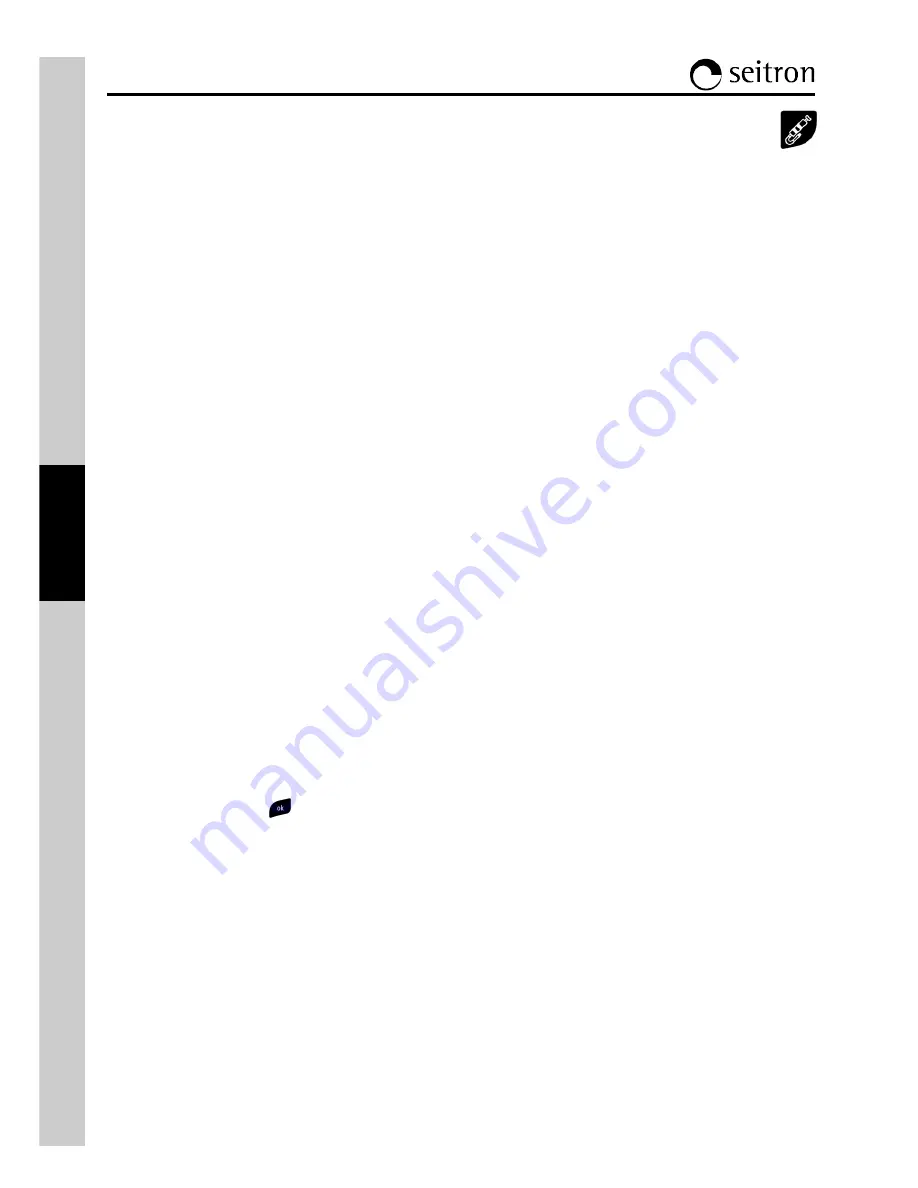
44
K900000000SE 022628A0 071013
P
:
Actual pressure measured by the instrument, in the selected measurement unit.
∆P
1
'
:
Pressure variation in the last minute, updated every 10 seconds. This value gives a rough indication
about the stabilization level reached in the piping system.
Wait time
: Remaining time before the stabilization phase ends.
Once the stabilization phase is terminated the tightness test is started. This test is performed by observing how
the pressure decays in time during a fixed 15 minutes interval, as stated in the applied standard.
During the tightness test phase the following values are displayed:
P
1
:
Pressure measured at the beginning of the test.
P
2
:
Pressure actually measured by the instrument.
∆P
:
Pressure variation with respect to the initial value. In case the actual pressure is lower than the
initial value (pressure is decreasing) this value has a negative sign.
Result
:
Reports the test result:
tight
when the pressure drop is greater than -10 Pa,
leak
when the pressure
drop is smaller than -10 Pa. Positive pressure changes are symptom of a temperature change
meanwhile the test is performed. Should this happen it is advisable to repeat the entire test.
Existing piping: UNI 11137: 2012 STANDARD
The standard UNI 11137: 2012 can be adopted for testing already existing internal piping systems. This test
requires to charge the piping up to the test pressure, then wait for an unspecified stabilization time until the
thermal effects caused by the test gas compression are nulled, and then calculate the amount of the possible
leakage from the measure of the pressure decays in 1 minute time for Methane and LPG in air and 2.5 minutes
for the LPG fuel. The test pressure should be as close as possible as the reference conditions following
explained.
REFERENCE CONDITIONS:
According to the combustible gas to be used in the piping, the tightness test must
be performed in one of the following reference conditions:
Natural gas: Reference pressure for test with supply gas
2200 Pa
Test pressure with air
5000 Pa
L.P.G.:
Reference pressure for test with supply gas
3000 Pa.
Test pressure with air
5000 Pa.
Note:
Chemist 400 allows the user to perform the tightness test even with a combustible gas different from the
supply gas. Anyway the reference standard does not provide a reference pressure in this situation, so the
reference pressure is taken like test gas is the same. Test result should be considered only indicative.
Chemist 400 allows the operator to customize the stabilization phase through the following parameter in the
stabilization menu:
WAIT TIME:
the stabilization phase duration can be set in the 1 .. 99 minutes range. As the UNI 11137: 2012
standard does not prescribe any stabilization duration, the factory setting for this value is borrowed from the
UNI 7129 standard, which requires a minimum stabilization time of 15 minutes. The waiting can be interrupted
any time by pressing the ' ' key, even in case the interval has not fully elapsed.
The tightness test performed according to the UNI 11137: 2012 standard requires the input of some data
regarding the piping system and the test conditions, as described in the following.
PIPING VOLUME:
An accurate tighness test performed according to the UNI 11137: 2012 standard requires to
know the piping volume. Because this data if often unavailable, Chemist 400 splits the test from the beginning
into two different paths: the first is adequate for pipings having volume smaller than 18 dm
3
(liters); this is the
most usual situation: in this case the volume value is not required because, through an 'overestimation' the
piping is assumed as having a volume of 18 dm
3
. The second path requires to input the piping value either
directly through the keyboard when known, or by a calculation which takes into account the sum of the
contributions due to each single pipe section or, finally, by measuring it through a simple procedure which
requires the injection into the piping of a known gas quantity through a graduated syringe.
In case the volume calculation is used, for each single piping section the ‘Add tube’ option must be selected and
then input the relevant material, nominal diameter and length. Chemist 400 calculates the single section volume
and adds it, when confirmed, to the total piping value. For error correction or for modifying the ongoing
calculation the subtraction operation is also available.
When the 'Volume measurement' option is selected instead, the procedure, described also in the flow charts of
the tightness test according to UNI 11137: 2012, is described in the following steps:
•
Close both faucets in the kit assembly supplied for the test execution.
•
Connect the graduated syringe to the hose which in the assembly is opposed to the pump.
1
2
3
4
5
6
7
8






























